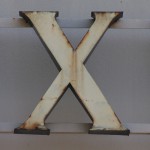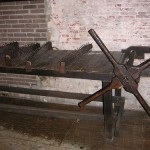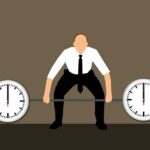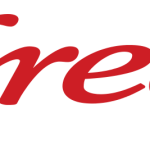Trying to spend down cash before filing bankruptcy?
It’s time to talk about the float.
Not the root beer float, though that would be more fun.
The bank “float”: the period between writing a check and it clearing your bank.
(We’ll talk about what to spend on before filing bankruptcy, too).
When you file bankruptcy, your schedules are supposed to show what you own on that day. For checking accounts, that’s the balance that the bank shows.
If you’ve written a bunch of checks right before filing, checks still floating out there on their way to the bank make your bank balance higher than the balance in your checkbook.
Why does the float matter
The money in your bank account on the day you file belongs to your bankruptcy estate.
Now, it may be fully exempt or it may be too little to interest a trustee in administering it, but that’s another story.
In the eyes of the law, the money in the bank is yours, even though you’ve written directions to the bank to pay some of it out to the holders of your checks. Those directions (your checks) just haven’t arrived at the bank.
A bankruptcy trustee can demand that you pay him that balance for the benefit of your creditors, even though the money has long since been paid out by the bank, who knew nothing of the bankruptcy case when it honored your check.
Bummer.
Spending before bankruptcy
If you are in the lucky position of having more cash on hand than you can exempt in your bankruptcy case, you may want to spend that money on things you’ll need after bankruptcy.
My list of purchases/expenditures that generally pass muster with bankruptcy trustees include
- Stocking your kitchen
- Repairing your car
- Paying insurance premiums
- Refilling prescriptions
- Getting needed health or dental care
- Replacing aged appliances
But if you pay for them with a check, right on the eve of bankruptcy, you run the risk that the checks haven’t cleared the bank when your case is filed.
More on cleaning up your finances before bankruptcy
Eliminate the float
Instead of paying by personal check, you can pay cash for your purchases. Be sure to keep a record of what you bought so you can trace the money for the trustee.
Or, you can buy cashier’s checks from the bank, and make your purchases with certified funds. The funds to buy a cashier’s check come immediately from your account at the bank.
A cashier’s check is a check on the bank’s checking account, not yours.
By using cashier’s checks, you spend down your funds and eliminate the risk that your bank balance will be artificially high on the day you file your bankruptcy case. And that’s good.
More on planning for bankruptcy
Do you know about the secret bankruptcy exemptions?
What belongs in your bankruptcy schedules
Interviewing a bankruptcy lawyer
Image courtesy of Flickr & boo_licious.






